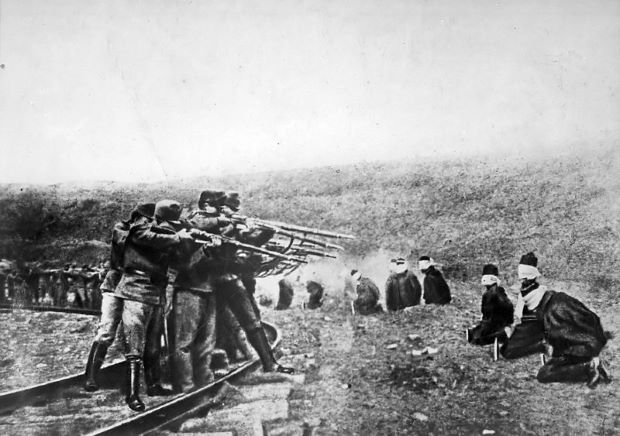July 28 in History
1914 – Austria-Hungary declares war on Serbia, igniting World War I
Using the assassination of the Austrian archduke Francis Ferdinand as a pretext to present Serbia with an unacceptable ultimatum, Austria-Hungary declared war on the Slavic country on this day in 1914, sparking World War I, one of the deadliest global conflicts in history that lasted from 1914 to 1918.
Fought between two coalitions, the Allies and the Central Powers, fighting took place throughout Europe, the Middle East, Africa, the Pacific, and parts of Asia. An estimated 9 million soldiers were killed in combat, plus another 23 million wounded, while 5 million civilians died as a result of military action, hunger, and disease. Millions more died as a result of genocide, while the 1918 Spanish flu pandemic was exacerbated by the movement of combatants during the war.
The first decade of the 20th century saw increasing diplomatic tension between the European great powers. This reached a breaking point on June 28, 1914, when a Bosnian Serb named Gavrilo Princip assassinated Archduke Franz Ferdinand, heir to the Austro-Hungarian throne. Austria-Hungary held Serbia responsible, and declared war on this day in 1914. Russia came to Serbia’s defence, and by August 4, defensive alliances had drawn in Germany, France and Britain, with the Ottoman Empire joining the war in November.
German strategy in 1914, known as the Schlieffen Plan, was to first defeat France and bypass their fortifications by moving through Belgium, then attack Russia. However, this manoeuvre failed due to heavy French and Belgian resistance, and British reinforcements. By the end of 1914, the Western Front consisted of a continuous line of trenches stretching from the English Channel to Switzerland. The Eastern Front was more fluid, but neither side could gain a decisive advantage, despite a series of costly offensives. Fighting expanded onto secondary fronts as Bulgaria, Romania, Greece, Italy and others entered the war between 1915 and 1916.
The United States entered the war on the side of the Allies in April 1917, while the Bolsheviks seized power in the Russian October Revolution, and made peace with the Central Powers in early 1918. Freed from the Eastern Front, Germany launched an offensive in the west on March 1918, hoping to achieve a decisive victory before American troops arrived in significant numbers. Failure left the German Imperial Army exhausted and z, and when the Allies took the offensive in August 1918, German forces could not stop the advance.
Between September 29 and November 3, 1918, Bulgaria, the Ottoman Empire, and Austria-Hungary agreed to armistices with the Allies, leaving Germany isolated. Facing revolution at home and with his army on the verge of mutiny, Kaiser Wilhelm II abdicated on November 9. The Armistice of November 11,1918 three days later brought the fighting to a close, while the Paris Peace Conference imposed various settlements on the defeated powers, the best-known being the Treaty of Versailles. The dissolution of the Russian, German, Austro-Hungarian, and Ottoman Empires resulted in the creation of new independent states, among them Poland, Finland, Czechoslovakia, and Yugoslavia. Failure to manage the instability that resulted from this upheaval during the interwar period, as well as hyperinflation in Germany and Austria due to crippling war debts, contributed to the outbreak of World War II in September 1939.
-Wikipedia
Photo Caption – Austro-Hungarian troops executing captured Serbians, 1917. Serbia lost about 850,000 people during the war, a quarter of its pre-war population – Wikipedia



Comments are closed, but trackbacks and pingbacks are open.